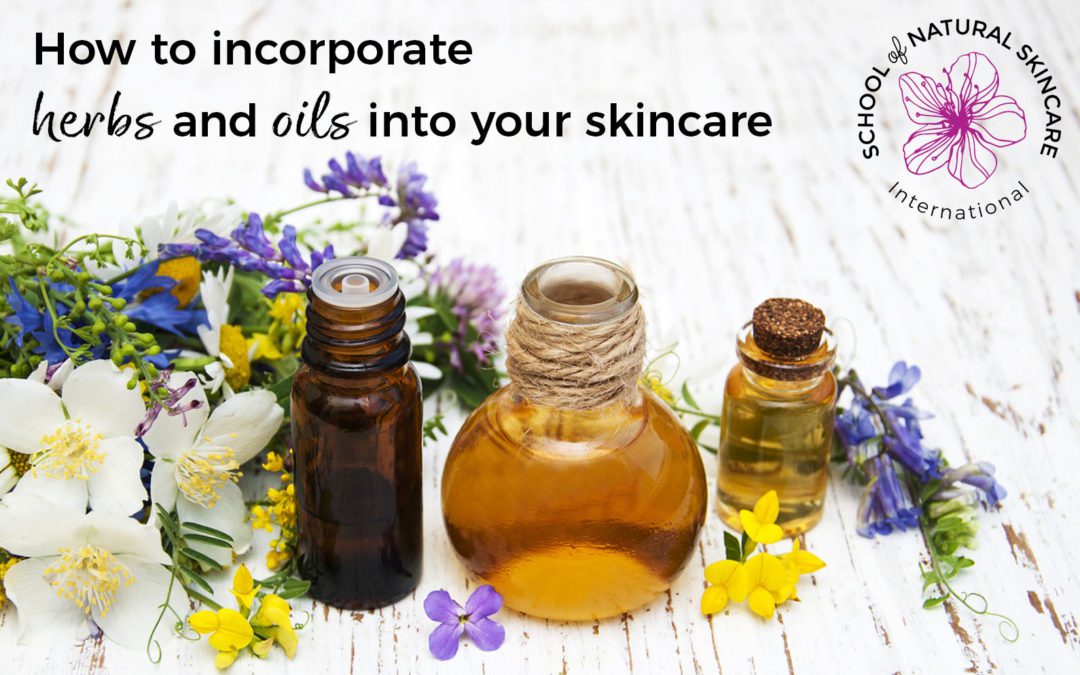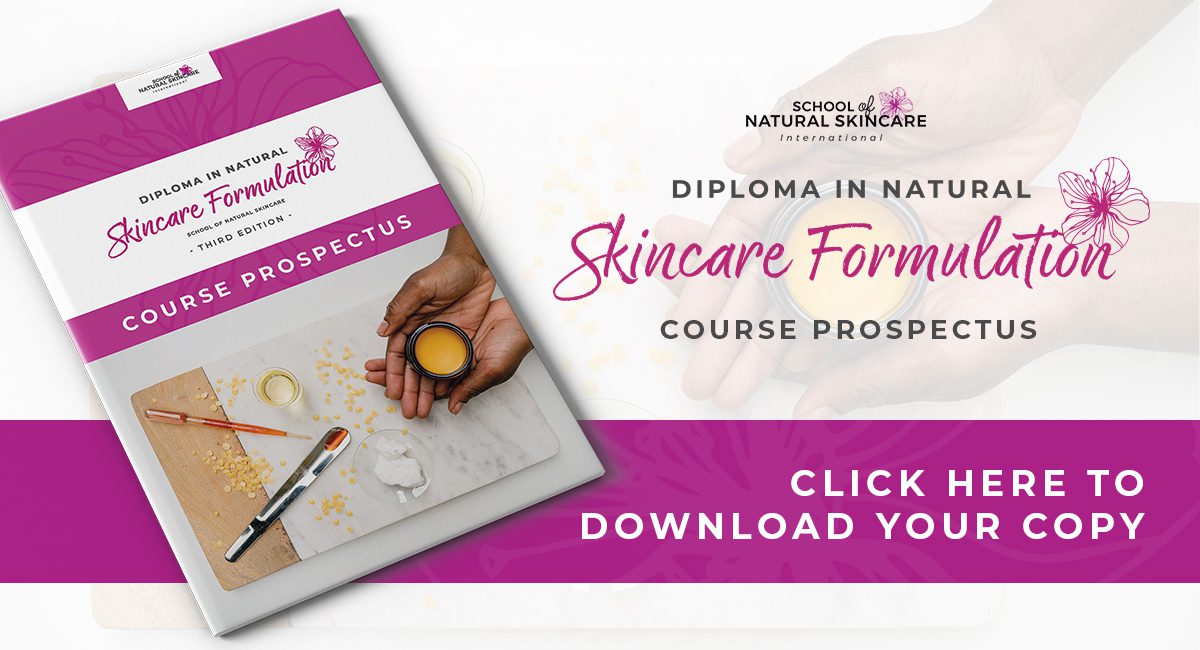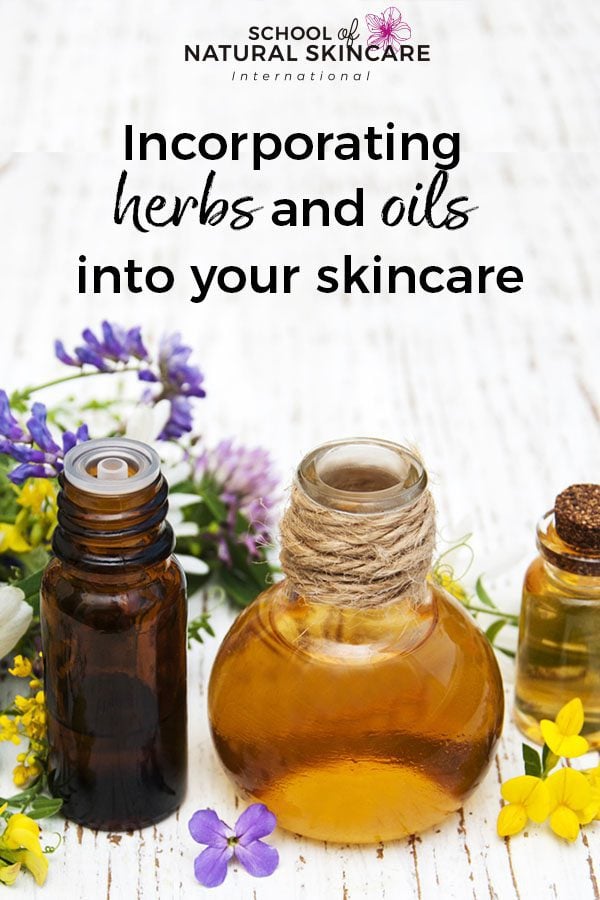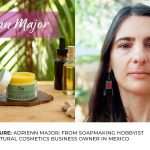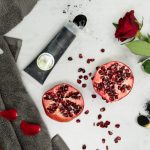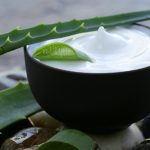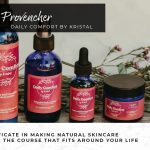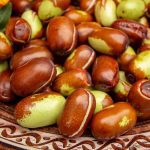If you love all things natural and organic, chances are that you’re already drawn to herbal-based and plant-based products—and not just in your skincare!
You might own and regularly use first-aid creams made with calendula, hypericum, comfrey, arnica, lavender, chamomile, or tea tree. You might have a drawer full of your favorite essential oils, or keep various carrier oils around for massage. You might even enjoy a good cup of healing herbal tea.
And if you’re really into it, you might see an alternative healing practitioner, who helps you incorporate herbal remedies into your own healthcare. Ask any herbalist, aromatherapist, ayurvedic practitioner or acupuncturist about herbs and oils and they’ll tell you all about the wonderful healing properties they possess, experiences they and their clients have had, and how many benefits they can provide with even the simplest uses.
Herbs and essential oils offer a unique way of accessing ingredients that possess wide-ranging therapeutic properties for mind, body, and soul. Within the last 30 years, we’ve seen a significant rise of alternative therapies that rely on, or incorporate herbal medicine: Homeopathy, herbalism, aromatherapy, acupuncture, shiatsu, ayurveda, and more.
Of course, herbs and oils are amazing and powerful when used in skincare, and across the board we know that this trend is only going to increase. The more people learn about these wonderful, nature-given ingredients, the more they’ll want to incorporate them into their own healing and restorative practices.
That’s the beauty and power of nature! So much potential is already there, just waiting to be discovered, accessed, and used. And there are so many ways to use these natural ingredients in your skincare products! Herbs and oils are readily available, easy to obtain, and (in most cases) affordable!
Note: We highly recommend consulting with a qualified practitioner—an aromatherapist or a herbalist—when treating yourself. If you’re currently suffering from an illness or chronic condition, or taking medication, please consult with your medical professional! Want to know more about using these powerful, versatile ingredients in your skincare? Keep reading!
The Right Herbs and Oils for the Right Purpose
There is so much variety in terms of plant based ingredients currently available for use in skincare products. Carrier oils, essential oils, extracts, tinctures, flower waters… there’s just so much to choose from!
But here’s the thing. Using herbal ingredients in skincare properly and safely requires some level of knowledge of what the herbs and oils do, what is the best method of delivery, and how they interact with other ingredients, and with each other! We don’t necessarily recommend going out into your garden, cutting fresh herbs, and applying them to your skin. You’ve got to know which plant based ingredients to use and how to use them, to end up with the results you desire.
Carrier Oils
Carrier oils are oils that have been extracted from seeds, nuts, and stones or kernels of plants. through a process of compression—cold pressing, which is literally crushing the stone, seed, kernel or nut to release the oil. Examples include:
- Avocado (stone/kernel)
- Macadamia (nut)
- Sunflower (seeds)
These oils are packed full of fatty acids and other beneficial ingredients such as phytosterols, vitamins, carotenoids and squalane. When oils are applied on the skin they fill up small spaces between epidermal cells, which is seen and felt as smoother, healthier and softer skin. Oils can have other benefits too such as regenerating, anti-inflammatory, anti-microbial, improving elasticity and improving the skin barrier function.
Macerated Oils
Macerated oils, also called infused oils, are when dried herbs—or other flowers, petals, or leaves—are placed in a carrier oil and left for four to six weeks. You can shake them once a week, and leave them in a warm place to speed up the process. During that time, the oil-soluble properties of the plant are being transferred to the carrier oil. In most cases it’s important to use dried plant material; using fresh herbs may introduce moisture into your infused oil, which will spoil it.
This is useful when a herb or plant has a very low or no carrier oil yield, but possesses strong healing qualities—Calendula is a great example of this! After the process is complete, you’re left with a supercharged, specialist carrier oil. Besides calendula, examples include:
- Carrot Tissue Oil
- St. John’s Wort
- Arnica
Check out this article for more information on how to make your own herbal infused oils!
Essential Oils
Essential oils are oils which have been extracted from plants through a process of distillation using steam. They can be extracted from a variety of plant parts: leaves, bark, flowers, petals, roots, stems, grasses, herbs, and fruits.
Of course, many essential oils are derived from herbs – lavender, rosemary, marjoram, sage, peppermint, basil, chamomile, thyme, verbena, lemon balm to name a few.
Once extracted, the oil that remains contains a concentrated fragrance with many therapeutic and sensory qualities! Essential oils can help to lift our mood or calm our nerves, raise our spirits or relax the senses. And they can also offer profound functional qualities as well.
When used in skincare product formulation, these qualities can include helping to:
- Improve local blood circulation
- Encourage a glowing complexion
- Promote healthy skin growth and cellular renewal
- Repair the skin’s barrier layer
- Clean and cleanse the skin
- Kill and clear harmful microbes
- Balance sebum production
- Or add a wonderful deodorizing effect
Learn more about our top five essential oils for skin here!
Please note: essential oils are highly concentrated chemical compounds that must be used very carefully in small dilution. They must never be used neat on the skin and instead they must always be diluted into a carrier substance like a carrier oil.Carrier oils and essential oils are not the same. Please follow the correct safety advice for the ingredient type you are using.
Other Herbal Ingredients
Carrier oils, macerated oils, and essential oils are probably the best-known and most-used plant-based ingredients, but they certainly aren’t the only ones. There are lots of herbal extracts! Hydrosols (flower waters), tinctures, CO2 extracts, powdered extracts,and glycerin extracts are some excellent and specialized ingredients which can be amazing when incorporated into your skincare formulations.
Empower Yourself and Enhance Your Products
The availability and accessibility of herbs, oils, and extracts means we can easily make our own natural and organic beauty products for a fraction the price of store-bought brands. It’s incredibly empowering to do something so simple, and yet so profound, to take nourishing and self-care to the next level with these powerful products!
While there’s no substitute for seeing a qualified medical professional for the health challenges that you might be struggling with, incorporating herbs and oils into your lifestyle in so many ways can offer amazing benefits. That could mean steeping a herbal tea, diffusing a combination of essential oils that speaks to you, or making your own beauty products. There is power in plant based ingredients, and you don’t need to be a scientist to use them—but you do need to learn how to use them correctly.
And the School of Natural Skincare International has been helping people just like you do precisely that!
Knowing which herbs and which oils to use, as well as the other plethora of natural skincare ingredients—butters, waxes, vitamins, antioxidants, emulsifiers, preservatives, thickeners and stabilisers—can either be a trial-and-error process, or one you can approach with confidence. The difference is all in the training.
But what kind of training is best?
You can learn from theory—what’s written in a trustworthy book or in a course based on up-to-date research. This will tell you things like:
- The therapeutic properties of ingredients
- Which skin type an ingredient is most suited to
- Qualities such as viscosity, thickness, slide/slip, absorption rate, and aroma etc
- Important safety information for storage, shelf life, and any contraindications
You can also learn from practice—getting more hands-on by applying what you know from your studies to real-world examples. Learning from reputable sources is really important, but when we live it, practice it, and do it, we truly become properly informed.
We recommend both methodologies for really understanding how to use the power of herbs and oils and other plant based ingredients in skincare.
When you study in a book about a carrier oil, you retain that vital information by putting it into practice. You learn about the properties it can impart, and then you can feel it on the skin, smell it, see it in action. By experiencing those things first-hand, we retain the information better!
And on top of that, the natural and organic skincare field is ever-changing—and it’s not one-size-fits-all. You might try out an oil that’s supposed to be perfect for dry skin, but find that it’s not quite perfect for your dry skin. Or find another ingredient that’s meant for oily skin, but ends up feeling greasy. It’s so important to try them out and learn for yourself.
With essential oils, it’s even more important to try them out. Applying an essential oil carries little emotional response, despite how powerful the effect can be. It’s the scent of an essential oil which elicits the emotional response. They mean something profound, can summon memories and feelings, and can be used to tap into a specific mental state again and again, whether that’s relaxation, energizing, focus or romance.
Trying to describe the scents of these amazing ingredients is almost impossible. You’ve just got to smell them for yourself!
Throughout our courses, we provide the opportunity for our students to weave together both academic and practical knowledge. With a combination of scientifically-accurate information and hands-on learning, we teach our students how to work with ingredients by truly experiencing them—getting them out, exploring their qualities, writing up findings, trying different ratios and different combinations. We encourage both the practical exploration of ingredients as well as the practical art of making products by hand.
Want to know more?
Our Diploma in Natural Skincare Formulation teaches you to formulate your own products, from scratch, just like the professionals do, using natural and organic ingredients. You can learn how to make top-quality products that are tailored to suit specific skin types, and learn so much more about these amazing herbs and oils—and so many other plant based ingredients as well! It’s our most in-depth training course, and it teaches the art and science of skincare formulation using up-to-date knowledge and hands-on experience.
FREE GUIDE:
The Beginner’s Guide to Formulating Natural Skincare Products (From scratch, like a professional!)
Start creating your own natural skincare products
from scratch – rather than simply following recipes!
Exclusive for our newsletter subscribers. Sign up now.
Download this fabulous guide and you’ll learn:
- What formulating is and why you need to be doing it!
- The difference between following recipes and formulating your own products.
- How to formulate like a pro! Seven top tips for becoming a confident skincare formulator.
- Our step-by-step process to designing products people love.
- Four easy ways to personalize your skincare products.
- Choosing the right carrier oils for your beauty products.
PLUS: Receive two free worksheets!
Love this blog post? Save this image below on Pinterest so you can be sure to remember!

